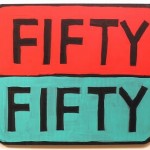Fifty-fifty – Ki Tissa
 Every Israelite had to give half a shekel (Ex. 30:13). What is a shekel? The Torah explains, “The shekel is 20 gerahs”.
Every Israelite had to give half a shekel (Ex. 30:13). What is a shekel? The Torah explains, “The shekel is 20 gerahs”.
Moses must have had a problem with the mathematics, because the sages say (Shek. 4b) that God displayed a coin of fire to show Moses what was meant. But surely Moses could have worked it out for himself?
One possibility is hinted at by Rashi, who indicates that there was some confusion amongst the people as to the exact weight of the gerah, so God had to settle the conflict.
Another approach takes into account the psychology of Moses. As a spiritual leader he may have thought everyone should devote 100 per cent of their time to spiritual pursuits. Prayer, meditation, study – it could add up to a full-time occupation.
God, however, had a different plan. Half of a person’s time, energy and means had to go to spirituality, and half to material pursuits.
Yet even that is not quite as simple as it sounds. Just as there is a distinction between pure and applied mathematics – and other disciplines also – there is a distinction between pure and applied spirituality.
Pure spirituality focuses on the soul. Applied spirituality works in and on the more mundane activities of the human being.
A person needs to eat – that’s a mundane activity – but eating with refinement and accompanied by b’rachot, that’s applied spirituality. A person has to work (the rabbis say that a person who wishes to observe a Sabbath must first spend the weekdays in work, even unpaid work if necessary) – and working honestly and ethically is applied spirituality.
One must live as a spiritual and ethical human being in the midst of the world, not as a hermit in seclusion.



